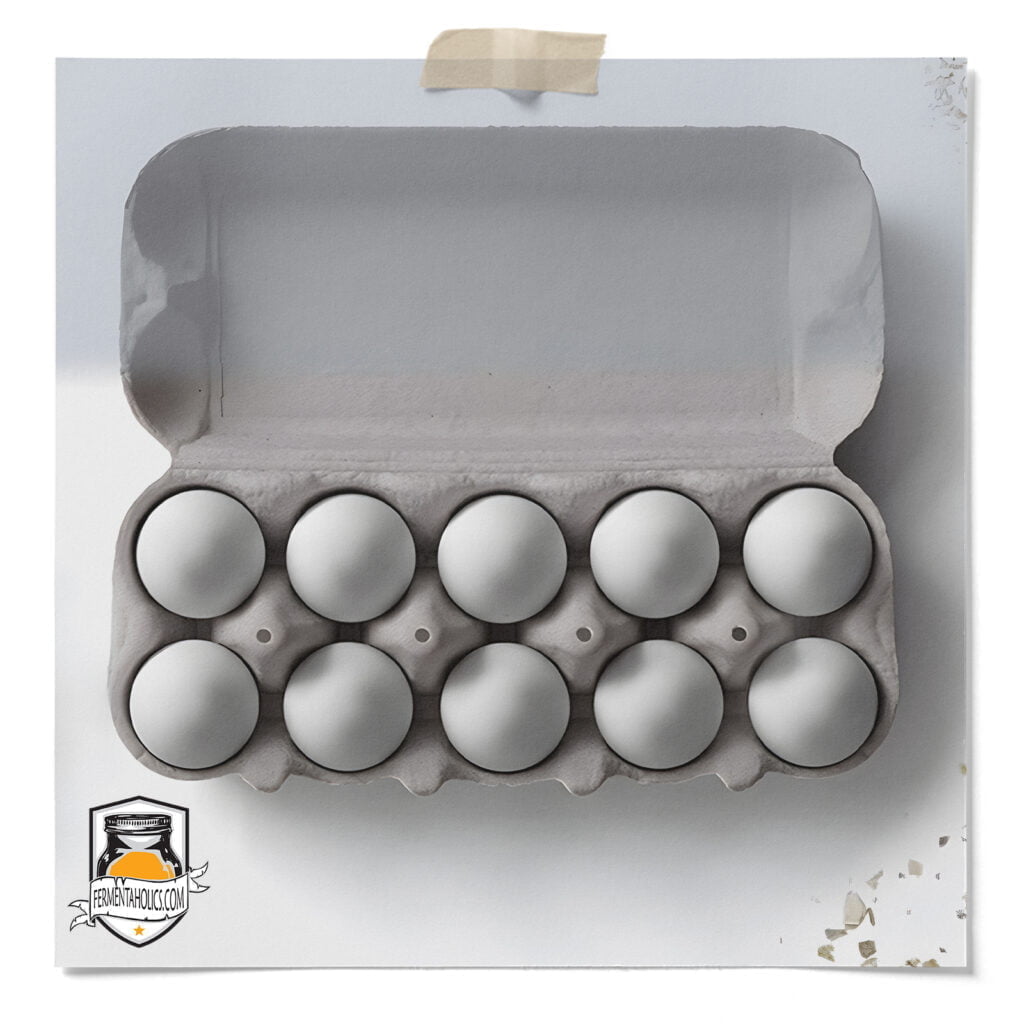
Pickled eggs are hard-boiled eggs that have been cured in a vinegar brine. This salty snack dates back to the 1700s when German immigrants ate them while fighting against the Colonist during the Revolutionary War. Pickled eggs gained popularity as bar food in the late 1800s when bars started advertising free lunches for their customers to gain more business. Today they are still popular in German cuisine and creative variations of this classic can be found on menus worldwide.
The word “pickle” comes from the Dutch term pekel, which means brine. You can pickle a wide variety of ingredients by preserving them in a pickling liquid or brine, but the process is famous for its effect on cucumbers and the crunchy pickle that it creates. Today we are going to be focusing on pickling a breakfast favorite and something almost every kitchen has – eggs.

Known for the vinegary bite and crunchy texture it creates in foods, the vinegar pickling process is an international delicacy. Whether it’s pickled red onions on taco night or a crunchy sliced dill on your bacon cheeseburger, pickled foods add a texture and flavor that leads to delicious bite after delicious bite. The great thing with vinegar pickling is how easy and simple the process is: salt, time, and an acidic solution (i.e., vinegar) are all you need to make staple classics from many different global cuisines. The basics always work, though there are classic recipes and blends you can use to impart extraordinary flavors on your foods, like our Perfect Pickle Pickling Spice.
Sometimes referred to as quick pickling, the most important aspect of this process is the vinegar and its five percent acidity: this is what creates the changes in flavor and texture and preserves the food. Many believe vinegar pickling is a form of fermentation, but it all depends on your process and ingredients. To learn more about the science behind pickling and fermentation, check out our article: Are Pickles Fermented? For your pickling vinegar, distilled white vinegar and white wine vinegar are two popular choices, but there are many options you can use, all depending on what flavor, texture, and even color you are looking to create. Once you’ve selected your vinegar, check out our Vinegar Pickling Kit for the perfect setup and everything you need to start pickling today.
32 Oz Jar
15
Minutes72
HoursThis classic pickled eggs recipe is for nine eggs in one 32 oz jar. For a larger batch, scale this recipe by multiplying the ingredients or toggle the serving size above.
9 Peeled Hard Boiled Eggs
1 TBSP Pink Himalayan Salt
1 TBSP Perfect Pickle Spice Blend
3/4 Cup Filtered Water
3/4 Cup Distilled White Vinegar
2 TBSP Packed Fresh Dill
1-2 Cloves Garlic, Peeled And Smashed
1/2 Onion (Sliced)
1 Quart Mason Jar
1 Bowl
Measuring Spoons
Hard boil and peel nine eggs. Bring water to a full boil before adding the eggs, then gently place the eggs in a single layer and set a timer for 9 minutes. At 7 minutes get an ice bath ready. When eggs are finished, place in the ice bath for at least ten minutes. This will make peeling the shell easy and effortless.
Mix vinegar, water salt, and pickling spice together in a bowl. (This will be your brine.)
Add eggs, garlic, and onion slices to your mason jar.
Pour your brine over the eggs and seal.
Refrigerate for 3-4 days before enjoying.
